
纳米生物医学工程(英文)(Nano Biomedicine & Engineering 或 Nano Biomedicine and Engineering)
- 国级普刊
- 主管单位:
教育部
- 主办单位:
上海交通大学
- 国际刊号:
- 国内刊号:
31-2196/Q
- 学科分类:
- 字数:
-
- 有无基金:
- 周期:
CN外文-季刊
- 特殊属性:
外文期刊
- 电话:
021-62800059
- 邮箱:
nanobe@nanobe.org(官网邮箱)
- 复合因子:
0
- 综合因子:
0
- 收录:
- 级别:
国级普刊
期刊简介
《纳米生物医学工程》期刊已被查看: 次
更新频次
单位占比
一作占比
投稿指南
1、投稿方式:在线投稿。
2、官网网址:http://www.nanobe.org
https://www.sciopen.com/journal/2150-5578
3、投稿系统:https://mc03.manuscriptcentral.com/nbe
4、主办单位网站:
http://www.qk.sjtu.edu.cn/jsjtuj/CN/column/column23.shtml
(上海交通大学期刊中心)
5、出刊日期:季刊,逢季末月出版。
2023年9月12星期二
《纳米生物医学工程(英文)》
(Nano Biomedicine and Engineering)
作者指南【官网信息】
Author Guidelines
COMMUNICATIONS
Highest priority will be given to the communications reporting important new scientific and technological findings. Rapid publication is provided for concise and up-to-date reports. These articles should not exceed three-four published pages. No section headings should be used for these short communications.
RESEARCH ARTICLES
Full length papers that report original research work on new ideas in the fields of biomedical nanotechnology.
REVIEWS
The state-of-the-art review articles with author's short biography and photo will be published. Reviews are limited to a maximum length of 30 journal pages. It is author's responsibility to obtain written copyright permissions to reproduce any copyright materials from other sources. Authors are advised to cite proper references in figure/tables captions of all previously published figures/tables/illustrations including their own published work and obtain copyright permissions from appropriate publishers and authors.
Order of the Text
Papers should be written in the below order:
Title – Author(s) (full names instead of are required) - Author affiliations - Corresponding author e-mail address(es) – Abstract – Keywords – Introduction – Experimental - Results and discussion – Conclusions – Acknowledgments – Conflict of interests – References – Supplementary information (if necessary)
Please insert pictures and tables in text.
Introductory material
The first page of the manuscript should have a concise title limited to about 15 words and the names of all authors, complete mailing address for correspondence, telephone, fax numbers and email address. Please indicate with an asterisk (*) the author to whom correspondence regarding the manuscript should be directed. Each name should be linked to an address by means of references 1, 2, ...
Abstract
All manuscripts must contain an informative 500 words abstract explaining the essential contents of the work, key ideas and results.
Keywords
A list of 5-10 "keywords" should be included with the abstract.
Figures
It is very important to supply high quality figures in a form suitable for reproduction. Each figure must be referred to in the text and will be printed in black and white unless otherwise instructed by the authors. All formulae and figures should be carefully drafted and never drawn freehand. Use same font and size for all figure legends. High quality original figures and glossy prints of all photographs are required. Photocopies of the figures and photographs are not acceptable. The total number of figures should be no more than 8. The resolution of figures should be at least 600dpi. Numbers of x- and y-axis must write large enough, because published figures are only 1/8 page.
Free Color Printing
Color illustrations are most welcome by the journal as they are effective in conveying complex graphs and photographs. Free color printing at the Editor-in-Chief's discretion, will provide an opportunity to publish color figures/illustrations in print at NO COST to the authors.
Tables
Each table must be referred to in the text. Each table should be typed double-spaced on a separate sheet and identified sequentially by Arabic numerals corresponding to the order in which they appear in the text. Each table should have a brief explanatory title, which should be labeled unambiguously. The position of each table should be clearly marked in the text.
Units
Internationally accepted units of measurement must be used. The units of measurement are used in conjunction with their numerical values; the units should be abbreviated as suggested below. If more commonly used units are adopted, conversion factors should be given at their first occurrence. Greek symbols may be used. (e.g. 25.8 JK-1 mol-1).
Abbreviations
No abbreviations are allowed in the title and abstract and should be defined the first time they are used within the text.
All abbreviations used in tables and figures should be defined in the table note or figure caption, respectively.
References
References should be in the proper format on a separate page, numbered in the sequence (1,2,3,4,5, ..) in which they occur in the text. Cite the references in the text as Arabic numbers in one consecutive series by the order of appearance in the text, with the text citations presented as unparenthesized superscripts. Include the title of the article in the cited reference. write only 3 authors with et al. References should be listed in the following style:
Journal Article
Authors, Title. Journal, year, volume(issue): pages.
J.A. Kopechek, E. Park, C.S. Mei, et al., Accumulation of phase-shift nanoemulsions to enhance MR-guided ultrasound-mediated tumor ablation in vivo. Journal of Healthcare Engineering, 2013, 4: 109-126.
Book
Authors or editors, (Chapter tilte.) Book title. Publisher, year: pages.
H.S. Nalwa, Handbook of nanostructured biomaterials and their applications in nanobiotechnology. American Scientific Publishers, 2005: 35-46.
D.J. Kirwan, C.J. Orella, Crystallization in the pharmaceutical and bioprocessing industries. Handbook of industrial crystallization (second edition). Butterworth-Heinemann, 2002: 249-266.
Conference Proceedings
Authors, Title. Conference. Place, date: pages
J. Kimura, H. Shibasaki, Recent advances in clinical neurophysiology. Proceedings of the 10th International Congress of EMG and Clinical Neurophysiology. Kyoto, Japan, Oct. 15-19, 1995: 36-42.
Patent
Inventors, title. patent number, date of authorization
C.E. Larsen, R. Trip, and C.R. Johnson, Methods for procedures related to the electrophysiology of the heart. U.S. Patent 5529067, Jun 25, 1995.
Acknowledgements
These should be brief and placed at the end of the text before the references.
Conflict of Interests
Competing interests that might interfere with the objective presentation of the research findings contained in the manuscript should be declared in a paragraph after Acknowledgment section and before References. If there is no competing interest, please use the statement for example, "The authors declare that no competing interest exists".
Proofs
Page proofs for the correction of printer's errors only will be dispatched to the corresponding author denoted with an asterik (*) unless otherwise requested. Alterations at this stage are not allowed as they are expensive and may have to be charged to the authors. The proofread copy and reprint order form must be returned within 72 hours.
TOC (Table of Content) Figure
Auhors should provide a TOC (table of content) figure to be published alongside the published article on the home page. The size of the TOC figure shoud be 310px (width) * 170px (height).
上一篇:生物安全和生物安保(英文)(或:生物安全与生物安保)(Journal of Biosafety and Biosecurity)(OA期刊)下一篇:中国寓言研究(集刊)
《纳米生物医学工程》同类医卫综论期刊
-
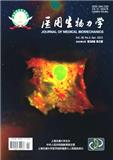
医用生物力学
北核,CSCD,科核,武A
CN中文-双月刊影响因子1.164
-
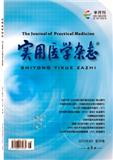
实用医学杂志
北核,科核,武A+
CN中文-半月刊影响因子1.949
-
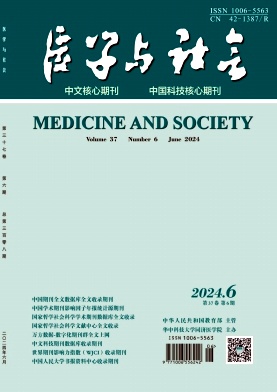
医学与社会(原:同济医科大学学报.社会科学版)
北核,科核,CACJ-核心,AMI扩,武B+
CN中文-月刊影响因子2.142
-
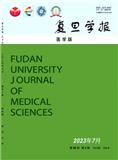
复旦学报(医学版)
北核,CSCD,科核,武A
CN中文-双月刊影响因子1.332
-
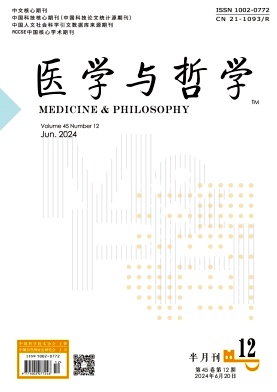
医学与哲学(原:医学与哲学(A)、(B)等)
北核,科核,科核,武A-,AMI扩
CN中文-半月刊影响因子1.425
-

中国全科医学
北核,科核,武A+
CN中文-旬刊影响因子2.882
-
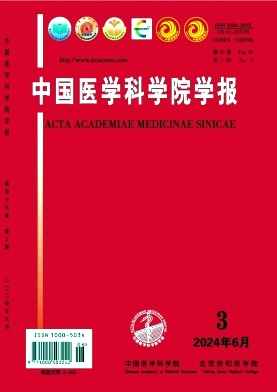
中国医学科学院学报
北核,CSCD,科核,武A
CN中文-双月刊影响因子1.431
-
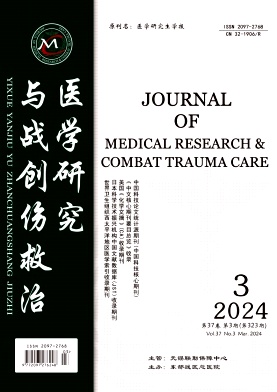
医学研究与战创伤救治(原:医学研究生学报;金陵医院学报)(不收版面费审稿费)
北核,科核,武A
CN中文-月刊影响因子1.579
常见问题
-
纳米生物医学工程杂志社官网、联系方式是什么?
纳米生物医学工程杂志社官网:http://www.nanobe.org
投稿网址:https://mc03.manuscriptcentral.com/nbe联系电话:021-62800059
投稿邮箱:nanobe@nanobe.org(官网邮箱) -
纳米生物医学工程杂志是核心期刊么?
纳米生物医学工程不是核心期刊,级别是:国级普刊, 是:医卫综论分类下的
-
请问你们是纳米生物医学工程杂志社吗?
我们不是《纳米生物医学工程》杂志社。本站主要从事期刊信息展示与期刊推荐,不是任何杂志官网,直投稿件请联系杂志社。本站仅提供免费的学术指导、论文辅导、期刊投稿信息整理收集服务。
-
你们指导服务后可以保证文章被发表吗?
期刊发表的成功与否,主要取决于文章内容的质量。编辑老师会根据研究领域、创新性等多因素进行考量。我们会帮助您理解期刊的发表要求,助力提升发表几率,从而增加发表的机会。
-
晋级论文能否在报纸上发表?
在学术界,论文的发表往往被视为研究者职业发展的重要一环。晋级论文,即为了获得更高职称或学术地位而撰写的学术论文,通常需在专业期刊上发表。然而,许多人可能会问
